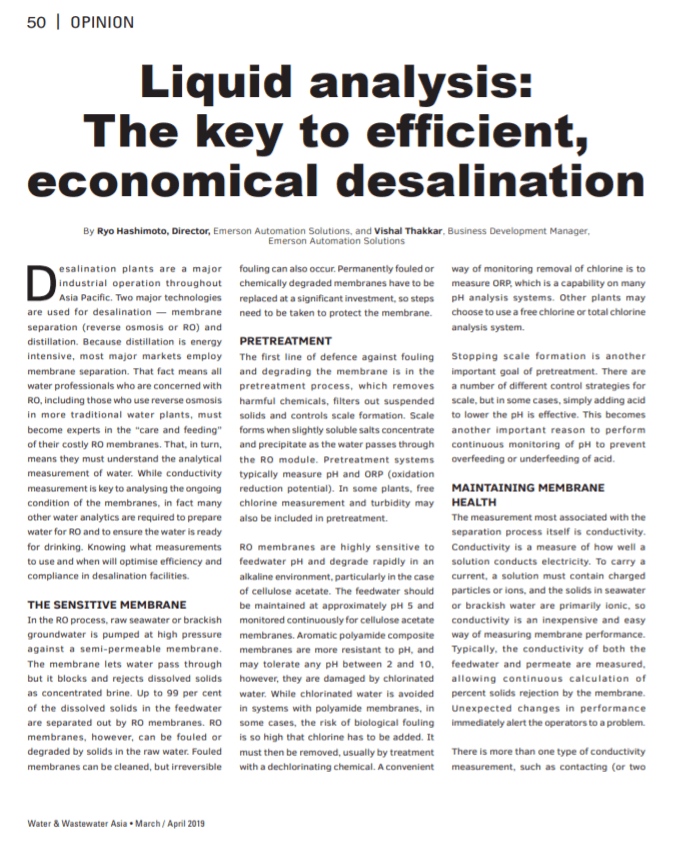In many areas of the world, including the Asia-Pacific region, desalination plants have been built to meet the need for fresh water.
In a Water & Wastewater Asia magazine article, Liquid analysis: The key to efficient, economical desalination, Emerson’s Ryo Hashimoto describes desalination process types and their important measurements.
 Ryo opens highlighting the two major desalination technologies:
Ryo opens highlighting the two major desalination technologies:
…membrane separation (reverse osmosis or RO) and distillation. Because distillation is energy intensive, most major markets employ membrane separation.
These expensive membranes need to be carefully monitored to optimize fresh water production. In this reverse osmosis process:
…raw seawater or brackish groundwater is pumped at high pressure against a semi-permeable membrane. The membrane lets water pass through but it blocks and rejects dissolved solids as concentrated brine. Up to 99 per cent of the dissolved solids in the feedwater are separated out by RO membranes.
The trapped solids foul the membranes which then need to be cleaned. He notes that irreversible fouling can occur requiring these membranes to be:
…replaced at a significant investment, so steps need to be taken to protect the membrane.
pH is an important measurement with the control range based upon the type of membrane material as is the presence of chlorine. Ryo notes that chlorine levels can be monitored by measuring:
…ORP [oxidation-reduction potential], which is a capability on many pH analysis systems. Other plants may choose to use a free chlorine or total chlorine analysis system.
Conductivity is another important measurement. Conductivity sensors, such as Rosemount 400 contacting conductivity sensors, measure feedwater and permeate:
…allowing continuous calculation of percent solids rejection by the membrane. Unexpected changes in performance immediately alert the operators to a problem.
Read the article for more guidance on the use of free chlorine, monochloramine, and turbidity analyzers during disinfection and post-treatment phases of the desalination process. Wireless sensors have simplified the installation and provided an increased view to optimize operations and help avoid membrane damage.
Visit the Liquid Analysis section of Emerson.com for more on solutions for pH, ORP, conductivity, dissolved oxygen, ozone, chlorine and turbidity.
You can also connect and interact with other liquid analyzer experts in the Measurement Instrumentation group in the Emerson Exchange 365 community or at the Sep 23-27 Emerson Exchange conference in Nashville.





